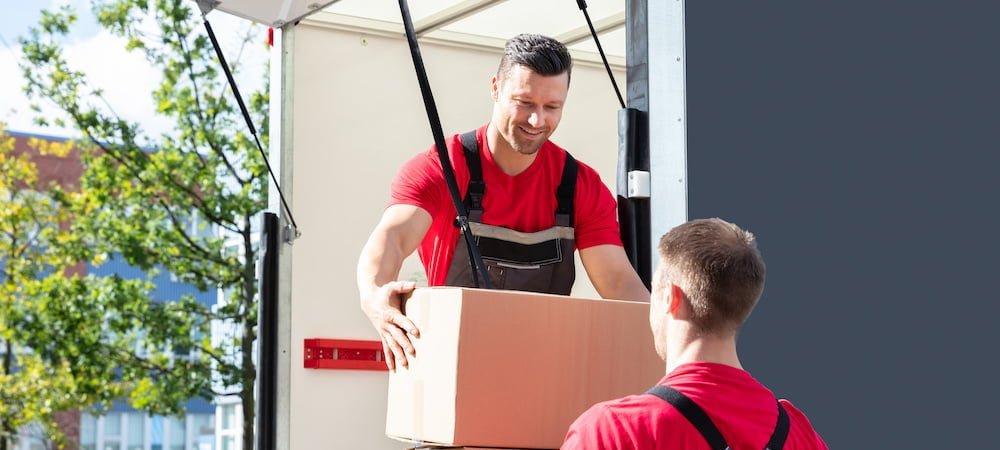Moving And Storage Services: Expert Relocation Experts Can Assist Make Your Transition Smooth And Worry-free
History and Development of Moving Solutions
The Dawn of Moving: From Muscle to Devices
Picture this: a handful of strong men carrying heavy trunks on wood carts, browsing cobblestone streets with sweat and decision. Before the contemporary moving industry took shape, moving was a ruthless, labor-intensive task. In ancient times, relocation frequently implied relying on large physical strength and simple tools. The absence of specialized services indicated households and merchants had to coordinate every detail themselves, often risking damage or loss.
Isn't it interesting how necessity fuels innovation? As cities broadened and commerce thrived, the requirement for effective, dependable more info moving services became glaringly obvious. Enter the era of horse-drawn wagons and later on, motorized vehicles, which revolutionized how belongings traveled from one location to another.
Industrial Revolution: The Catalyst for Modification
The 19th century's commercial boom reshaped many facets of life, including how individuals moved. Unexpectedly, urban migration surged, and with it, the need for expert movers escalated. No longer was moving a basic task; it progressed into a customized service offering:
- Packing expertise to secure fragile products
- Organized loading methods optimizing space
- Transportation services customized to various ranges
This duration marked the birth of business dedicated exclusively to moving, preparing for today's complex logistics and customer-centric methods.
Technological Advancements and Their Effect
Can you think of moving without contemporary devices? The arrival of hydraulic lifts, forklifts, and pallet jacks transformed the market overnight. All of a sudden, movers might handle large furnishings and heavy devices with ease, reducing injuries and improving efficiency.
Furthermore, the integration of digital innovation sparked a brand-new wave of development. GPS tracking, online booking platforms, and real-time inventory management have become staples in the moving services landscape. These tools not only enhance transparency but likewise empower customers to remain connected and notified throughout their moving journey.
Secret Milestones in Moving Provider Development
| Period | Development | Significance |
|---|---|---|
| Ancient Times | Manual labor and standard carts | Structure of moving as a requirement |
| 19th Century | Horse-drawn wagons and packaging services | Birth of professional moving business |
| 20th Century | Motorized trucks and mechanized equipment | Increased efficiency and scale |
| 21st Century | Digital integration and GPS technology | Improved consumer experience and logistics |
Reflections on the Journey
Assessing the evolution of movers, one might wonder: how did a basic act of carrying belongings become an advanced market? It's a tale of resilience, adjustment, and continuous enhancement. From the sweat-soaked streets of old to the precision-driven operations of today, the history of moving services is as dynamic as the individuals who rely on them.
Next time you pack a box or hire a mover, consider the layers of history embedded in every step. The journey of movers encapsulates human resourcefulness, changing what was when a daunting job into a smooth experience.
Checking out the Spectrum of Moving Providers
When the time pertains to shift your life from one address to another, the series of moving services available can feel like navigating a maze. Do you need a basic loading and discharging crew, or does your move need the skill of complete packing and unpacking? Comprehending the subtleties can save hours of disappointment and unexpected expenses.
Common Types of Moving Solutions
- Regional Relocations: Designed for movings within a city or city, these services typically operate on a hourly basis, ideal for brief distances.
- Long-Distance Moves: Covering moves beyond 100 miles, these require more coordination, from logistical preparation to protect transportation, often priced by weight and range.
- Full-Service Relocations: Movers handle whatever-- packing, filling, carrying, unloading, and in some cases even unloading. Suitable for those pressed for time or energy.
- Self-Service Moves: You load and pack your possessions, while the company deals with transport and unloading. A happy medium offering cost savings and some benefit.
- Specialized Relocations: For delicate, bulky, or important items like pianos, antiques, or artwork, needing specific devices and knowledge.
Specialist Tips to Navigate Your Moving Service Choices
- Prioritize Flexibility: Choose a service that adapts to unexpected hold-ups or last-minute modifications-- stiff schedules can turn a smooth relocation into a logistical headache.
- Examine Insurance Options: Not all moving business offer the same level of security. Understanding your coverage can prevent distress if something goes awry.
- Request Comprehensive Inventories: A precise product list avoids disputes and guarantees responsibility, particularly when handling long-distance or specialized relocations.
- Think About Season: Seasonal demand can affect schedule and pricing. Early booking during off-peak seasons might approve better service and flexibility.
- Ask About Packaging Products: Premium boxes, bubble wrap, and cushioning can be the difference in between a scratched heirloom and a beautiful arrival.
Table: Service Features Compared
| Service Type | Who Packs? | Transport Mode | Normal Pricing Design | Ideal For |
|---|---|---|---|---|
| Local Move | Customer or Movers | Truck | Per hour | Short distances, small loads |
| Long-Distance Move | Movers | Truck or Container | Weight & & Range | Cross-state or local moving |
| Full-Service Move | Movers | Truck | Flat or Weight-Based | Time-sensitive, high-stress relocations |
| Self-Service Move | Customer | Truck or Container | Flat or Hourly | Cost-conscious, hands-on movers |
| Specialty Move | Movers with know-how | Specialized Devices | Custom Quote | Fragile or valuable products |
The Unseen Complexity Behind Each Choice
Have you ever questioned why moving appears simple and easy on tv but turns into a cascade of last-minute decisions in genuine life? The reality lies in the intricacies of each service type. For example, full-service moves may look like a luxury, but the proficiency involved in packaging delicate treasures or taking apart bulky furnishings is a craft honed over years. Choosing for a self-service move might conserve cash, however it demands an eager understanding of how to load efficiently-- did you know that stacking unusually shaped boxes incorrectly can trigger internal moving throughout transit, trashing vulnerable contents?
Picking the right type of moving service is not practically benefit-- it's about safeguarding your memories and investments. What's your move's story going to be?

Packaging and Moving Strategies
Ever tried to fit a travel suitcase that simply won't close? That's the type of puzzle professional movers resolve daily-- but on a much bigger scale. The secret lies not in strength but in tactical positioning and smart usage of space. Packing isn't merely about packing items into boxes; it's an art type where every inch counts.
Layering for Success
Envision a painter layering colors to produce depth. Similarly, when packing, start with much heavier products at the bottom, then cushion with softer materials like bubble wrap or towels. This avoids damage and makes the most of box stability. Oddly shaped items can slip into spaces, reducing squandered space.
- Wrap delicate items separately with tissue or foam to avoid scratches.
- Use clothing as padding-- it's both effective and environment-friendly.
- Fill empty areas with packing peanuts or crumpled paper to decrease motion.
Labeling: The Unsung Hero

What excellent is perfect packaging if you spend hours searching through boxes? Detailed labeling is a game-changer. Instead of vague tags like "Kitchen," try this technique:
| Label | Description | Concern |
|---|---|---|
| Fragile - Glassware | Handle with care, contains fragile products | High |
| Basics - First Night | Products required right away after moving | Immediate |
| Books - Research Study Space | Stacked, heavy books | Medium |
Strategic Packaging Tips
- Take apart big furnishings and keep screws in labeled bags taped to the pieces.
- Use uniform box sizes when possible-- stacking becomes much easier and safer.
- Do not overpack boxes; weight limitations exist for a reason. Go for 40-50 pounds max.
- Wrap furniture edges with moving blankets to avoid scratches during transit.
- Seal boxes with top quality packing tape-- double layers on the bottom are important.
Why do some movers swear by a color-coded system? Because it eliminates guesswork on moving day. Appoint each room a color and mark boxes accordingly. This small step can conserve hours when unloading and unpacking.
Packing and moving demand accuracy-- like a chess game where every relocation counts. Have you ever observed how some movers handle bulky items effortlessly? They utilize angles and pivot points to browse tight corners without damage. It's not muscle; it's technique.
Unseen Struggles Behind the Moving Van Doors
Ever enjoyed a group of professional movers bring a grand piano through a narrow entrance and wondered how they pull it off without a scratch? The art of moving isn't simply muscle and trucks; it's a delicate dance with unpredictability. Weather condition can turn from a sunlit blessing to a torrential hazard in minutes, turning a straightforward drive into a logistical maze.
One well-known obstacle is the labyrinthine layout of some homes or houses. Staircases too tight for dollies, doorways narrower than standard boxes, or elevators that barely fit a couch-- these physical quirks require innovative services on the spot. Movers typically resort to unconventional strategies like dismantling furnishings or using personalized padding to protect both the item and the residential or commercial property.
Precision Packing: More Than Simply Covering
It's tempting to think packaging is merely packing boxes, but the reality is a complicated puzzle of weight circulation and fragility. Movers must anticipate how items will shift throughout transit-- a mistake can mean shattered treasures or dented home appliances. The trump card? Strategic layering and using materials with particular shock-absorbing qualities.
- Bubble wrap is basic, however rotating it with foam sheets can dramatically reduce impact damage.
- Heavy products go at the bottom; delicate ones nestle on top, cushioned by soft textiles.
- Identifying boxes not just by contents but by handling guidelines ensures quicker, safer dumping.
Another less discussed strain is the psychological toll. The clock ticks non-stop, and every delay ripples through tight schedules. Staying calm amidst disorderly last-minute changes requires mental dexterity and team synergy.
Traffic Congestion and Timing: The Unnoticeable Opponents
| Obstacle | Specialist Technique | Impact |
|---|---|---|
| Urban blockage | Route optimization apps and flexible scheduling | Minimizes delays and fuel consumption |
| Parking limitations | Pre-arranged permits or strategic parking nearby | Avoids fines and time loss |
| Unpredictable weather | Water resistant coverings and contingency plans | Maintains the condition of goods and devices |
Do you truly know what it takes to keep a moving day on track? It's not practically strength or stamina; it has to do with insight, versatility, and a deep understanding of every piece of the puzzle. The next time you see movers at work, keep in mind: behind that seamless operation lies a series of determined maneuvers and quick thinking that couple of ever notification.